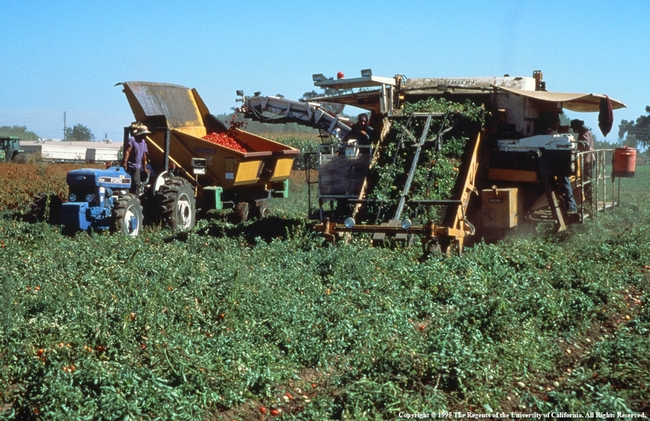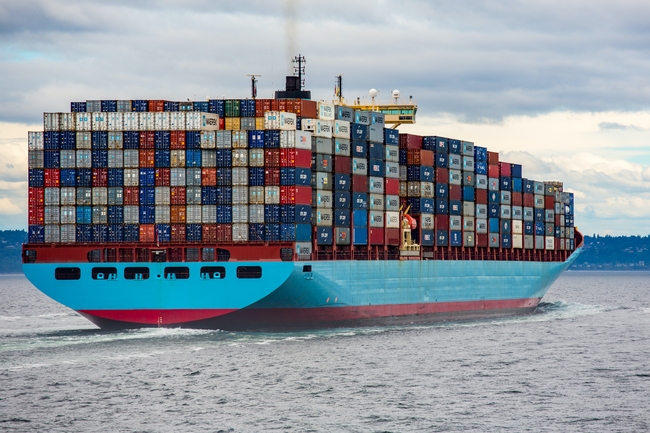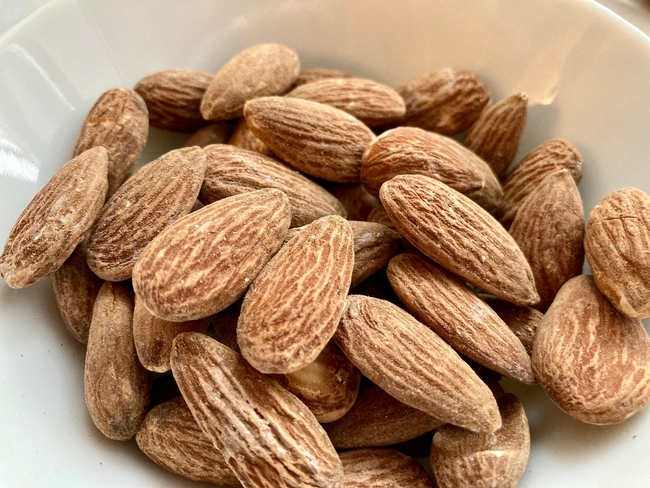
Posts Tagged: tomatoes
New cost study for processing tomatoes released by UC
A study on the costs and returns for growing processing tomatoes has been updated by the University of California, Davis Department of Agricultural and Resource Economics and UC Cooperative Extension.
The newly released analysis is based upon a hypothetical well-managed farming operation using sub-surface drip irrigation and farming practices common in the Sacramento Valley and northern Delta. The costs, materials and practices shown in this study will not apply to all farms.
The cost study is authored by Brenna Aegerter, UCCE farm advisor for San Joaquin County; Patricia Lazicki, UCCE farm advisor for Yolo, Solano and Sacramento counties; Donald Stewart, staff research associate in the UC Davis Department of Agricultural & Resource Economics; Gene Miyao, emeritus UCCE farm advisor; and Brittney Goodrich, UC Davis assistant professor of Cooperative Extension.
The analysis is based on a hypothetical farm with 3,500 non-contiguous acres, which are leased. Tomatoes are grown on 1,000 acres. All 1,000 acres of processing tomatoes are irrigated with sub-surface drip. The remaining 2,500 acres are planted to other rotational crops including alfalfa hay, field corn, safflower, sunflower, vine seed and wheat. The yield of 46 tons per acre is used to reflect the region's typical yields.
UC Cooperative Extension farm advisors and other agricultural associates provided input and reviews. The authors describe the assumptions used to identify current costs for the processing tomato crop, material inputs, cash overhead, and non-cash overhead. Ranging analysis tables show net profits over a range of prices and yields. Other tables show the monthly cash costs, the costs and returns per acre, hourly equipment costs, and equipment, investment and business overhead costs.
The new study, “Sample Costs to Produce Processing Tomatoes in the Sacramento Valley and Northern Delta - 2023,” and sample cost of production studies for many other commodities can be downloaded for free from the UC Davis Department of Agricultural and Resource Economics website at http://coststudies.ucdavis.edu.
For additional information or an explanation of the calculations used in the studies, contact Goodrich at bkgoodrich@ucdavis.edu, Aegerter at bjaegerter@ucanr.edu, or Lazicki at palazicki@ucanr.edu.
‘Containergeddon’ at ports cost California farmers $2.1 billion in exports
New research estimates economic losses due to congestion, inefficiencies
Between wildfires, drought, a trade war and the COVID-19 pandemic, the last few years have been hard on California farmers. But recent research by agricultural economists from UC Davis and the University of Connecticut suggests that economic losses to California agriculture from recent supply chain disruptions may have an even greater economic impact.
In an article titled “‘Containergeddon' and California Agriculture,” researchers estimate that there was a 17% decline in the value of containerized agricultural exports between May and September 2021, resulting from recent port congestion. This amounts to around $2.1 billion in lost foreign sales, which exceeds losses from the 2018 U.S.-China trade war.
By the peak of the disruption in September 2021, nearly 80% of all containers leaving California ports were empty – about 43% fewer filled containers leaving California's ports than there were prior to the pandemic. And since 40% of filled shipping containers leaving California's ports are filled with U.S. agricultural products – around a third of which are from California – farmers in the state experienced significant lost export opportunities.
By September 2021, there were around 25,000 fewer containers filled with agricultural products leaving California ports than there were in May 2021. Processed tomatoes, rice, wine and tree nuts saw the sharpest average trade declines.
“We calculated California tree nut producers lost about $520 million,” said Colin Carter, UC Davis Distinguished Professor of agricultural and resource economics. “This was followed by wine with a loss of more than $250 million and rice with about $120 million lost.”
During the pandemic, an increase in household savings led to increases in consumer spending, with many of these additional goods being imported from Asia. California ports were overwhelmed by the added shipping containers coming in from Asia. At times, bottlenecks at Southern California ports left more than 80 vessels waiting off the coast to unload. Docks and warehouses ran out of space and the turnaround time for shipping containers nearly doubled.
Increased U.S. demand for imported goods from Asia also led to increased demand for empty shipping containers in Asia. Prior to the pandemic, freight rates for shipping containers from Shanghai to Los Angeles were already higher than the return trip from Los Angeles, but this gap widened significantly after COVID-19. By September 2021, the fee to ship a 40-foot container from Shanghai to Los Angeles had increased sixfold to $12,000 – while the return trip from Los Angeles was only $1,400.
The high prices for containers from Asia, coupled with shipping delays from the high volume of imported goods entering California ports, made it more profitable for shippers to return containers to Asia empty, rather than waiting at the ports to have them loaded with U.S. exports for the return trip.
“If port inefficiencies persist, the ramifications for California agriculture will extend beyond the immediate loss of foreign sales, as importers begin to view California as an unreliable supplier of agricultural products,” Carter said.
To learn more about the supply chain disruptions at California ports, and their effect on California agriculture, read the full article by Colin Carter (Distinguished Professor in the Department of Agricultural and Resource Economics at UC Davis), Sandro Steinbach, and Xiting Zhuang (assistant professor and Ph.D. student, respectively, both in the Department of Agricultural and Resource Economics at the University of Connecticut): “‘Containergeddon' and California Agriculture,” ARE Update 25(2): 1–4. UC Giannini Foundation of Agricultural Economics, online at https://giannini.ucop.edu/filer/file/1640021835/20297/.
ARE Update is a bimonthly magazine published by the Giannini Foundation of Agricultural Economics to educate policymakers and agribusiness professionals about new research or analysis of important topics in agricultural and resource economics. Articles are written by Giannini Foundation members, including University of California faculty and Cooperative Extension specialists in agricultural and resource economics, and university graduate students. Learn more about the Giannini Foundation and its publications at https://giannini.ucop.edu/.
Root inhibiting herbicide injury on processing tomatoes
Root-inhibiting herbicides (like pendimethalin or trifluralin) are soil-applied and pre-plant...

Tomato plant with herbicide injury (roots)
Field bindweed yield impacts on processing tomatoes may be less than expected
August 7, 2021 Field bindweed (Convolvulsus arvensis) is considered by many tomato growers to be...
The potential threat of branched broomrape for California processing tomato: A review
From the California Agriculture 75(2):64-73....



